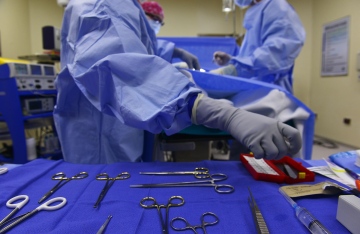The Labrador is a friendly companion and working dog breed. Historically, the dog earned his or her keep as a helper of fishermen. He or she fetched ropes, hauled nets, and retrieved fish from the cold and unforgiving North Atlantic. Today, the dog is one of the world’s most popular breeds.
Labrador retrievers work for hunters, assist the handicapped, work in search and rescue operations, and compete in dog shows. Whilst the breed is pretty healthy and hardy, the dog is still susceptible to certain hereditary conditions. Some conditions are apparent in Lab pups but most do not appear until the dog reaches maturity. Surgical correction can solve some of the more common health issues.
Caring for Your Pet
Due to poor breeding practices, some Labradors are more prone to genetic health issues such as hip dysplasia. This does not mean that all Labradors will develop this problem. However, the dogs are at an increased risk. That is why you need to make sure that you have your dog covered for medical and veterinary treatment. You owe it to yourself and your pet to make sure your Labrador is protected in case he or she gets sick. The insurance can be used for preventative treatments as well.
Insurance is indeed a necessity as Labrador Retrievers are affected by certain conditions. For example, several eye diseases are found in Labs. Progressive retinal atrophy is one vision condition that can render a dog blind. It begins with the loss of night vision and progresses to a point where the dog cannot see in the daytime.
Insuring Your Pet
Whilst most dogs can form cataracts, Labradors are more prone to get juvenile cataracts. Fortunately, juvenile cataracts can be surgically removed. Therefore, it is important that you invest in a Labrador pet insurance policy, especially if you face this type of procedure down the road.
Another condition, retinal dysplasia, is related to abnormal retinal development. However, this condition does not measurably impact a dog’s vision. The vet typically discovers this type of health issue during a routine vision exam.
Centronuclear Myopathy
One condition that affects Labrador puppies is centronuclear myopathy. This malady usually surfaces approximately two weeks after birth. The puppies first display an intolerance to exercise. Eventually, they end up moving like older dogs, even at young ages. The muscle disease can affect respiration as well. Whilst this type of condition is not often seen, it still can occur in the breed.
As a Labrador ages, you may notice that the dog’s bark sounds less robust. This symptom might be a sign of a condition known as laryngeal paralysis. The disease, which affects the muscles in the voice box, is often corrected with surgery.
Get a Health Guarantee
As mentioned, hip dysplasia also affects Labrador Retrievers. This malformation of the hip joint can lead to early-onset arthritis or lameness. When purchasing or adopting a Labrador puppy, make sure the animal comes with a health guarantee. The breeder should produce paperwork that states that the parents were free of dysplasia. To ensure your dog’s health and your own financial solvency as well, learn more about insurance for pets and include this type of protection in your financial portfolio.




